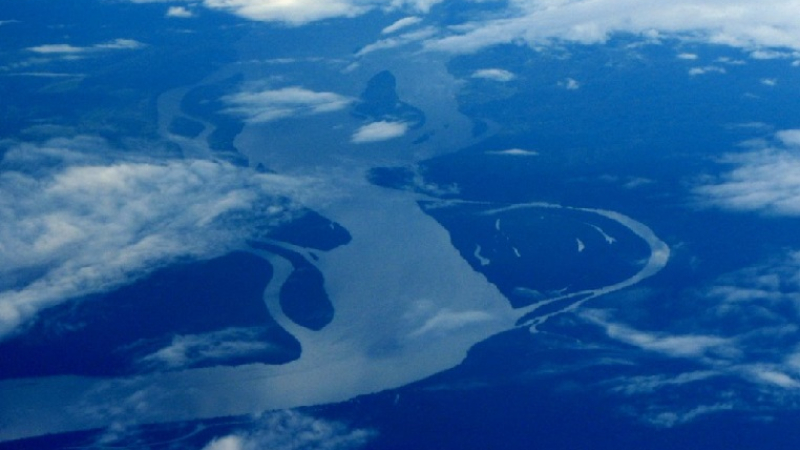Project – On record
This profile is no longer actively maintained, with the information now possibly out of dateBankTrack

Project – On record
This profile is no longer actively maintained, with the information now possibly out of dateBankTrack
What must happen
Banks and financial institutions should abstain from financing the São Luiz do Tapajós dam and other proposed dams in the Tapajós basin. This project is a no go for banks.
| Sectors | Hydroelectric Power Generation |
| Location |
|
With a maximum capacity of 8,040 megawatts, the planned São Luiz do Tapajós dam is expected to become the second largest dam in Brazil after Belo Monte. The São Luiz do Tapajós is the biggest of 43 dams currently planned or under construction in the Tapajós River Basin in the state of Pará, Brazil. The Tapajós river is one of the major tributaries of the Amazon.
The dam is feared to have a devastating impact on the surrounding ecosystem. The proposed reservoir would also flood parts of the indigenous Munduruku territory, force communities to resettle and have a huge impact on their daily lives.
Update: In August 2016 the São Luiz do Tapajós dam project was cancelled, after being denied an environmental licence.
Social and human rights impacts
The São Luiz do Tapajós dam is planned to flood seven per cent of the Sawré Muybu area, home of the indigenous Munduruku, who have lived on the banks of the Tapajós river for centuries. The Munduruku and other people traditionally living in the area highly depend on the river and the ecosystem it accommodates. If the dam is built, at least some of the indigenous communities will need to be resettled. Over 12,000 indigenous Munduruku, spread over 128 villages, populate the region where the dam is planned. The Tapajós' seasonal floods create highly fertile and productive grounds and are thus crucial to the food supply of many riverside communities. Besides the practical value of the Tapajós, the river also has a high spiritual value. Various ceremonial sites are located near the river, of which some will be flooded.
The banks of the Tapajós river also serve as a home to around 2,500 ribeirinhos, traditional river dwellers that inhabit the area for over 150 years. As with the Munduruku, these people's livelihood is heavily based on fishing and hunting, which are both under pressure by the dam project.
The indigenous Munduruku protest against the proposed flooding of seven per cent of their territory, including several ceremonial sites. At least several communities will be forced to resettle if the dam will be constructed. Under the Brazilian constitution indigenous territories seem well-protected. Only in unusual circumstances could these areas be exploited, and only after free, prior and informed consultation (FPIC). International law, under ILO Convention 169, also requires governments to carry out FPIC before any administrative changes on indigenous territories can be made.
For years, the Munduruku have been fighting for official recognition and demarcation of their territory. The responsible agency FUNAI (National Indian Foundation) ruled in favour of recognition in an initial report they completed in 2013. However, the final report was not published and the demarcation process stalled. During a videotaped meeting in September 2014, former president of FUNAI Maria Assirati emotionally admitted that the main impediment for demarcation was the proposed São Luiz do Tapajós dam. Nine days later, Assirati was replaced as president. In January 2015, she stated publicly that 'FUNAI is being devaluated and its autonomy totally disregarded'.
On 19th April 2016 the FUNAI finally decided that the 178,000-hectare territory along the Tapajós river, known as Sawré Muybu, should be recognized as indigenous territory in accordance with the Brazilian constitution. In reaction to the report, environmental license agency IBAMA suspended the license process one day later.
The suspension of the license process is a valuable first step towards recognitions of the rights of the Munduruku. However, critics fear the possible use of an outdated legal device by the Brazilian government, which can overturn any legal ruling that potentially harms public order, health, security or the economy. This device was frequently used to overrule laws that threatened the Belo Monte dam during its construction.
Environmental and climate impacts
The São Luiz do Tapajós dam is planned to have a reservoir of nearly 400 square kilometres. As is typical for dam reservoirs in forested areas, the flooded vegetation and soil decays and produces large amounts of carbon dioxide and methane. The creation of the reservoir alone will destroy 376 square kilometres of pristine rainforest. Moreover, a 2016 Greenpeace report expects an additional 2,200 square kilometres of indirect deforestation due to the dam's construction. Both the required infrastructure as the migration of workers is foreseen to lead to this destruction. Also, construction roads give access to remote areas and tend to attract illegal loggers and settlers.
The deforestation is bound to have a devastating effect on the fragile ecosystem and the high biodiversity that caracterizes the region. The conducted Environmental Impact Assessment (EIA) confirmed more than 2,600 species appear in the area of the proposed dam project, of which many are at the risk of extinction. The area is an important habitat for endangered turtles, river dolphins and fish.
An independent analysis by scientists, commissioned by Greenpeace, concluded that the performed EIA was deeply flawed and should be rejected by license agency IBAMA. Moreover, it noted that the project's status as part of a larger plan for hydropower plants in the Tapajós basin was not taken into consideration, and that taken together, the dams could have an even heavier impact on the environment.
